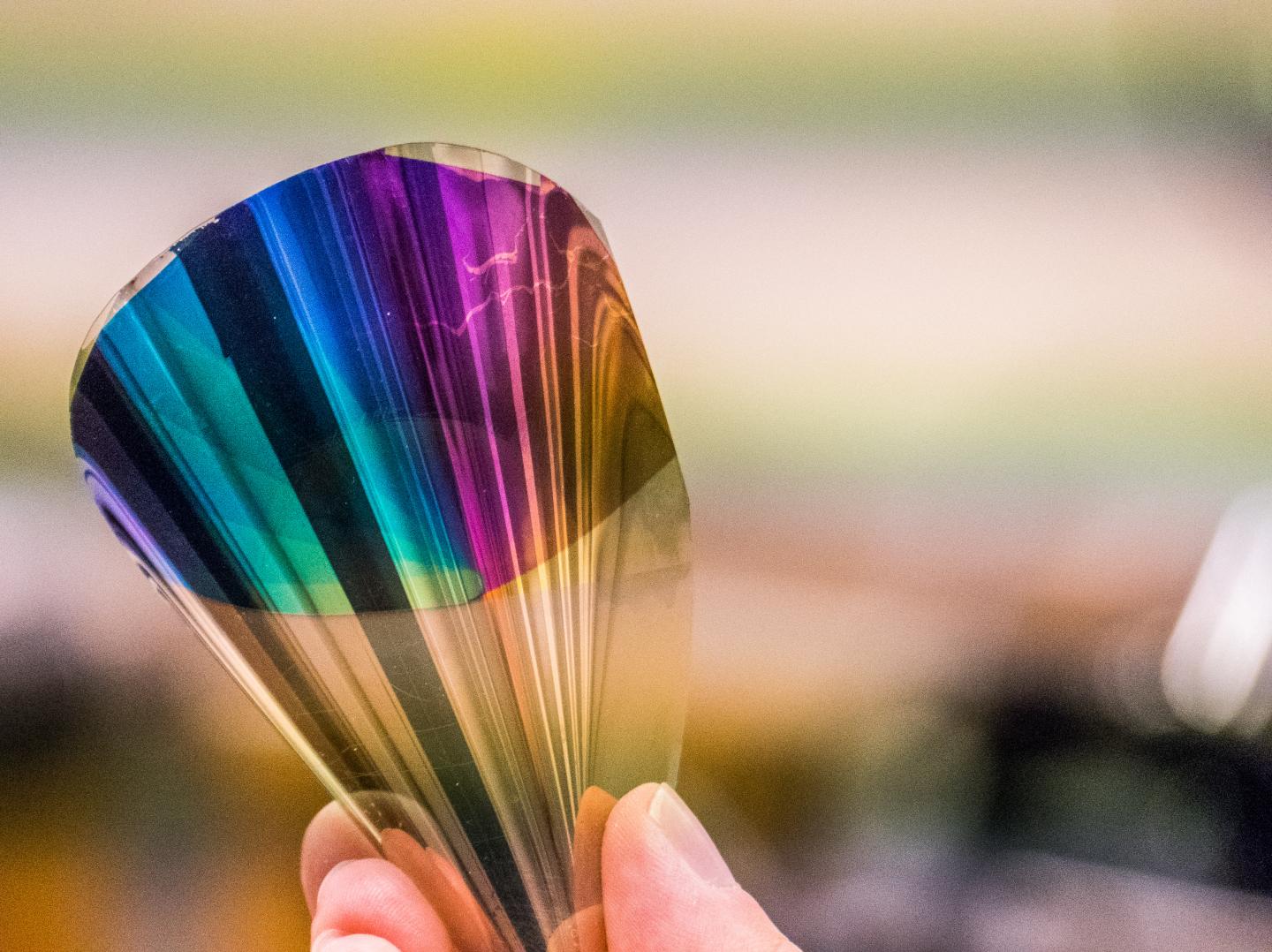Bendable electronic color ‘paper’ invented
October 19, 2016

Chalmers’ e-paper contains gold, silver and PET plastic. The layer that produces the colors is less than a micrometer thin. (credit: Mats Tiborn)
Chalmers University of Technology researchers have developed the basic technology for a new kind of reflective electronic “paper” that is micrometer-thin and bendable. It can display all colors displayed on an LED display, but with one tenth the energy required with a Kindle tablet.
This Chalmers logotype shows how RGB pixels can reproduce color images. The magnification shows which pixels are activated to create elements of the image. (credit: Kunli Xiong)
The technology is based on electrically controllable optical absorption of a conducting polymer, which is used to modulate the reflected light from ultrathin nanostructured plasmonic metasurfaces. (KurzweilAI has covered a number of research projects using reflective plasmonic designs, such as this one and this one.)

The plasmonic metasurfaces. (a) Schematic of the plasmonic metasurface, which has three layers. A 150 nm silver film was first deposited on the substrate to provide a high base reflection. The next alumina spacer layer tuned the reflective color by Fabry–Pérot interference. (b) Then 150 nm nanoholes in a 20 nm gold film were prepared on alumina by colloidal self-assembly and tape stripping. (c) The color palette was created by varying the alumina thickness for the primary colors red, green, and blue, corresponding to an alumina thickness of 48, 93, and 83 nm respectively. (d) A photo of samples with the primary colors under ambient light. (credit: Kunli Xiong et al./Advanced Materials)
“The ‘paper’ is similar to the Kindle tablet,” says Chalmers researcher Andreas Dahlin. “It isn’t lit up like a standard display, but rather reflects the external light which illuminates it. Therefore it works very well where there is bright light, such as out in the sun, in contrast to standard LED displays that work best in darkness. At the same time it needs only a tenth of the energy that a Kindle tablet uses, which itself uses much less energy than a tablet LED display.”
The material is not yet ready for production. One obstacle is that there is gold and silver in the display, which makes the manufacturing expensive, Dahlin explains.
He says optimal applications for the displays will be well-lit places such as outside or in public places for displaying information. This could reduce the energy consumption and at the same time replace signs and information screens that aren’t currently electronic today with more flexible ones.
Abstract of Plasmonic Metasurfaces with Conjugated Polymers for Flexible Electronic Paper in Color
A flexible electronic paper in full color is realized by plasmonic metasurfaces with conjugated polymers. An ultrathin large-area electrochromic material is presented which provides high polarization-independent reflection, strong contrast, fast response time, and long-term stability. This technology opens up for new electronic readers and posters with ultralow power consumption.